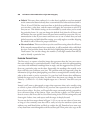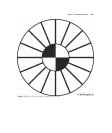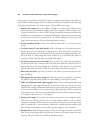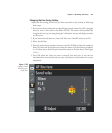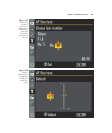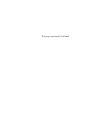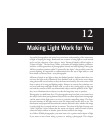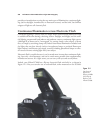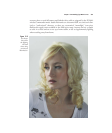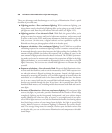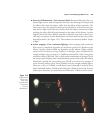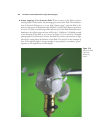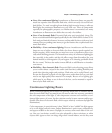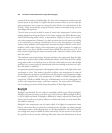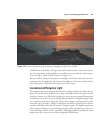
provides an introduction to using the two main types of illumination: continuous light-
ing (such as daylight, incandescent, or fluorescent sources) and the brief, but brilliant
snippets of light we call electronic flash.
Continuous Illumination versus Electronic Flash
Continuous lighting is exactly what you might think: uninterrupted illumination that
is available all the time during a shooting session. Daylight, moonlight, and the artifi-
cial lighting encountered both indoors and outdoors count as continuous light sources
(although all of them can be “interrupted” by passing clouds, solar eclipses, a blown
fuse, or simply by switching a lamp off). Indoor continuous illumination includes both
the lights that are there already (such as incandescent lamps or overhead fluorescent
lights indoors) and fixtures you supply yourself, including photoflood lamps or reflec-
tors used to bounce existing light onto your subject.
Electronic flash is notable because it can be much more intense than continuous light-
ing, lasts only a brief moment, and can be much more portable than supplementary
incandescent sources. It’s a light source you can carry with you and use anywhere.
Indeed, your Nikon D7000 has a flip-up electronic flash unit built in, as shown in
Figure 12.1. But you can also use an external flash, either mounted on the D7000’s
David Busch’s Nikon D7000 Guide to Digital SLR Photography396
Figure 12.1
One form of
light that’s
always available
is the flip-up
flash on your
Nikon D7000.



